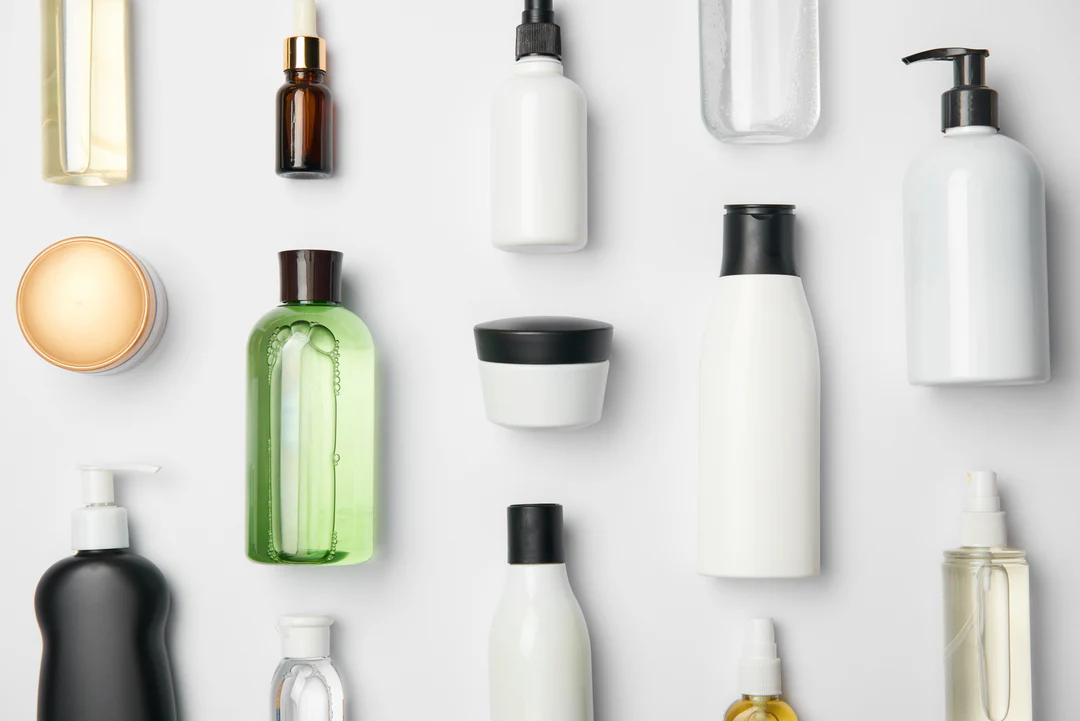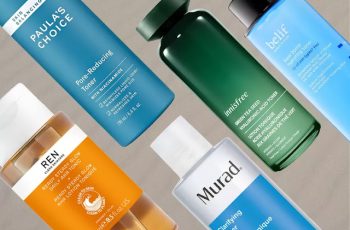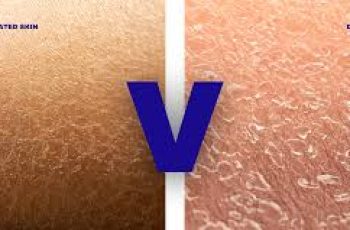Are you using your moisturiser correctly?
Okay, the temperatures have plummeted in the South East and your instinct might be to reach for that moisturiser that will moisturise you like the ocean. Anything to keep your skin cosy during the festive chill. But would you ruin your day if I told you that you might be using your moisturiser completely wrong? In today’s article, I’ll give you some tips on how to make the most of your moisturiser!
How to apply your moisturiser?
Whether you are new to skin care or a seasoned pro, you may find that sometimes your moisturiser isn’t quite the right fit for your skin issues. This could be because you’re not applying them to the right places, or it could be that you’re applying too much. The best way to apply your moisturiser is to apply a 10p-sized amount of the product to your forehead, cheeks, chin and neck. Gently rub the product into the skin. Remember to distribute it in upward motions. This will help you avoid sagging of the skin due to gravity for as long as possible. Finally, you can pat your skin off. Remember to apply the product along your neck to your décolleté as these are the areas where the first signs of ageing, fine lines and wrinkles become noticeable.
You can use your moisturiser as an eye cream. If you don’t have sensitive skin or eyes, you can apply facial moisturizer under the eyes along the orbital bone. Use your ring finger to avoid unnecessary pressure and pulling on the delicate, thin skin around the eyes. Be careful not to apply eye cream too high in the eye area as this can overload the skin and make it painful and form small white bumps called milia.
When should you apply moisturizer?
It’s best to apply moisturizer in the morning and at night before bed. If you use it twice a day, you’ll find that it helps regenerate and heal your skin by keeping the water and oil levels of your skin balanced and giving it a healthy look!
During the day, remember to apply sunscreen to protect your skin from the sun. Even on cloudy days, the sun’s UV rays are still there and UVA can penetrate glass and cause premature aging of the skin. If you want your moisturizer to have an SPF of at least 30 as this will give you 3 hours of protection, it’s ideal to reapply the SPF throughout the day, but this is understandably difficult for some people. Using a facial sunscreen spray is a quick and easy way to protect yourself from the sun.
Of course, you don’t have to worry about whether your moisturizer has an SPF at night. In fact, using products with SPF overnight can clog your pores and cause breakouts. Nighttime moisturizers are usually thicker than day creams, which usually means they contain more antioxidants, anti-pollutants, and repairing ingredients to hydrate your skin while you sleep. In the morning, your skin should still feel gooey, comfortable, and hydrated.
How do I know my moisturizer is working?
You’ll know your moisturizer is working when you see how comfortable your skin feels throughout the day. Moisturizers work to balance the water and oil levels of your skin, as well as the overall health and appearance of your skin. Signs of aging or other issues are often better addressed with serums and other products.
If you find that your skin is still tight and dry, or that it may be too oily, you should reevaluate whether your moisturizer is the best fit for your skin. Remember, it’s best to use a moisturizer even if you have oily skin, because even oily skin can be dehydrated, and using a moisturizer can help restore your skin’s balance.
If you develop a rash or your skin becomes irritated, it could be a reaction to an ingredient in the formula, or the method of application is too harsh on your skin. If the rash or reaction persists, stop using the product and seek advice from your GP.
Can you have too much moisturiser?
You can have too much of a good thing. If your face is drowning in moisturiser, this can actually have the opposite effect, causing your skin to break out and become clogged. After applying moisturiser, your skin may still feel a little sticky. Allow the product to fully absorb into your skin before applying make-up.
Moisturiser prices vary widely, from under £10 to over £100. However, using too much (more than 10p) at a time not only means you’re spending a fortune on new jars, but it can also alter the effects on your skin, meaning your moisturiser isn’t doing its job!
Pre- and post-flight benefits
If you’re planning a trip, whether it’s long or short haul, the intense drying effect of cabin air on the skin can be significant! To prevent your skin from becoming extremely dry, use a highly hydrating, water-infused gel moisturiser to keep your skin comfortable, rather than overdoing it with heavy formulas. You may need to reapply your moisturiser, or even a nourishing mask, during your flight to ensure the moisture is locked into your skin.
These are some tips for moisturizing. You’d be surprised how many of us make these simple mistakes. You can easily fix them and you’ll find your skin looks healthy, radiant and plump. If you use moisturizer correctly, you can also prevent wastage or the appearance of acne, clogged pores, milia or skin blemishes. Plus, you’ll save money, which is always a good idea, especially now that Christmas is around the corner!
DQH Knowledge drop: In your 20s, your skin cell turnover decreases. (Cell turnover is a key component in keeping your skin youthful.) You know what else slows down? Your collagen production. Starting in your 20s, collagen decreases by about 1 percent per year. Should you want to prevent fine lines and wrinkles, start by eliminating behaviors that contribute to premature aging. “If it’s bad for you, it’s bad for your skin,” says dermatologist Michel Somenek.
“Cigarette smoking reduces blood flow to the skin and causes premature wrinkling and a dull skin texture. Making the repeated pursed motion to inhale can also cause smoker’s lines. Alcohol and recreational drugs are toxins for the skin that damage its cellular structure and DNA,” Somenek tells us. “The faster you eliminate vices while you are young, the better chance your skin and body have to recuperate.” Also, adopting an anti-aging routine in your 20s is key. After all, the best offense is a good defense. We spoke to Somenek and experts Joshua Ross and Audrey Kunin to find out more.
Keep reading for the best anti-aging products for your 20s, according to skincare professionals.
Sunscreen
“We all know that the sun is the number one cause of skin aging and starting the prevention in your 20s is very important,” Ross says. “The majority of your sun damage won’t start to appear until you’re in your 30s, so don’t wait until you see it surface or you’ll be behind the curve. Stay ahead of it with a good-quality zinc-based sunscreen worn daily.”
Farmacy Green Defense Daily Mineral Sunscreen
An invisible sunscreen with SPF 30, plus botanical extracts meant to protect skin with tons of antioxidants. Bonus: It’s clean and fine to use under makeup.
Bareminerals Complexion Rescue™ Tinted Moisturizer Broad Spectrum SPF 30
Although we recommend you use your SPF and moisturizer separately, we also understand moments when you don’t have time or energy for that extra step. For those times, this bareMinerals moisturizer is a great thing to have on hand.
Vitamin C Serum
“A great introduction to anti-aging is to start with a vitamin C serum in your morning skincare routine,” Ross says. “It’s a powerful antioxidant that will neutralize free radicals and brighten the skin.” He adds that it’s a great way to counteract the effects of the sun’s harmful rays, which, as previously mentioned, are among the biggest causes of premature aging.
Drunk Elephant C-Firma™ Vitamin C Day Serum
The Drunk Elephant C-Firma is a lightweight serum that promises to give skin a glow by combining the brightening powers of vitamin C with ferulic acid, l-ascorbic acid, and vitamin E. The included sodium hyaluronate is meant to replace hydration loss, so you shouldn’t have to deal with any irritation.
Sunday Riley C.E.O. Rapid Flash Brightening Serum
This potent serum is jam-packed with vitamin C (15 percent, to be exact), which means it’s a potential superstar at both brightening skin and dousing it in antioxidants.
Peptides
Using peptides on your skin has many benefits, says Somenek. “The skin barrier is what defends the body against pollution, UV rays, bacteria, and toxins. It can be damaged by several everyday factors. Using topical peptides aids in building a stronger barrier,” he says. “Peptides comprise elastic fibers, which are a type of protein. These fibers help to make skin appear taut and firm. Peptides can also help repair damaged skin, relieve inflammation, and even out skin tone. Some peptides can kill acne-causing bacteria that is common in 20-somethings.”
Kunin agrees, saying, “Peptides are an excellent entry point for supporting collagen.” She recommends looking for face and eye treatments that contain these collagen-boosting powerhouses.
Charlotte Tilbury Magic Eye Rescue Cream
This Charlotte Tilbury super-emollient eye cream has a base of coconut oil and shea butter (read: it’s incredibly hydrating). Botanicals plus peptides are meant to help reduce dark circles and boost collagen, respectively.
This creamy moisturizer serves up potent collagen-boosting peptides and pycnogenol, and antioxidant-rich vitamin C. “Instead of sitting on top of the skin, peptides penetrate the outer layer so they go deep. The ‘signals’ they send tell the cells to produce elastin and collagen, which are needed for youthful-looking skin,” explains Somenek.
At-Home Peel Pads
Remember that skin cell turnover fiasco we talked about earlier? One way to help support it is by exfoliating. “Exfoliation is important to help keep skin fresh and luminous,” Kunin says. She recommends using at-home peel pads as an easy and effective way to exfoliate.
“The goal in your 20s is to fight the slowing pace of cell turnover. It is wise to use products that gently exfoliate, yet still remove oil and other impurities. Products that have Alpha Hydroxy Acids (AHA) or Beta Hydroxy Acids (BHA) are a good choice.”
According to Somenek, you should only exfoliate two to three times a week. “People of all ages are guilty of over-exfoliating and that can be too much of a good thing,” he says.
Dermadoctor Kakadu C Intensive Vitamin C Peel Pad
A few swipes of this Derma Doctor powerful peel pad promise to leave your skin glowing and smooth, thanks to the seven (yes, seven) types of chemical exfoliants, including AHA and BHA. It also contains vitamin C via Kakadu plum extract for added brightening and antioxidant protection.
KEY INGREDIENTS Kakadu plum extract is sourced from the Kakadu plum, a fruit grown in northern Australia. It contains vitamin C, which restores the skin’s natural barrier, increases collagen production, and soothes irritation.
Dr. Dennis Gross Skincare Alpha Beta® Universal Daily Peel Pads
These are the gold standard of peel pads, with a cult following and over 900 five-star reviews on Sephora. They’re easy to use and contain a blend of anti-aging exfoliating acids.
Emollient Night Cream
“In your 20s, you need to start upping the hydration in your skincare routine. You may have been cautious of over-moisturizing because of acne in your teens, but as you enter your 20s, your skin transitions and becomes drier,” Ross says. “I recommend an emollient night cream added into your evening skincare regimen.”
“Twenty-somethings need to make sure that they are not using creams that will clog their pores and cause excess oil production,” says Somenek. Opt for non-comedogenic products.
Cerave Skin Renewing Night Cream
One great choice is the CeraVe Skin Renewing Night Cream, which is a non-comedogenic night cream that leaves skin soft and glowy. It combines the moisturizing powers of ceramides and hyaluronic acid.
RoC Retinol Correxion Max Hydration Creme
“The best night cream ingredients contain retinol, benzoyl peroxide, and/or salicylic acid or hyaluronic acid. The goal is to moisturize, yet remove excess oil,” says Somenek. This Roc Retinol Correxion cream fits the bill as it contains both hyaluronic acid and retinol so it promises to moisturize while also being non-comedogenic.



